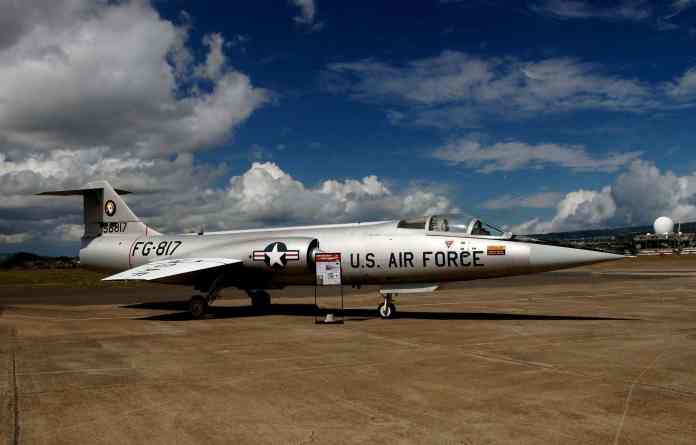
The Cold War is the time that is usually linked with the Lockheed F-104 Starfighter as one of the most visually impressive and, at the same time, controversial fighters. The idea of the Starfighter was a concise answer to a very demanding inquiry of that period: what would be the method for the US to intercept the Soviets and high-altitude flying bombers? Created in the period when these issues were almost like wars, the conflict of technology, speed, and air-breathing, the F-104 was the symbol of the Cold War confrontation.

Actually, it was the first production airplane to outrun Mach 2, hence the moniker “the missile with a man riding it.” With an almost disappearing wing and an aerodynamic, needle-like main body, the fighter was made with the utmost priority for velocity.

Equipped with the potent General Electric J79 power plant, it took the feat to the next level. In 1962, a Starfighter got to Mach 2.5 at 92,000 feet, establishing a record that marked a giant step in aviation from the previous decade. But at the same time, these same features that allowed it to achieve such a feat would also mean that it was a tough machine to handle even for the experts.

The miniature wings that carved the air at supersonic speeds provided low lift during takeoff or landing. The pilots had to fly the plane at unusually high approach speeds, thus giving no room for mistakes. At low range, it was lethargic, while the strong engine required careful operation during critical flight phases. Early electronic flight control systems were sometimes problematic, and when they failed, they seldom allowed a second trial. The experience of many pilots was that they had to be very careful when flying the F-104, as they were almost always on the border of victory and disaster.

So it was that the Starfighter soon found itself tagged with a negative reputation like “Widowmaker,” “Flying Coffin,” or “Death Tube” as a consequence of its accidents. The F-104 was an example of how focusing solely on performance could result in the detriment of safety. Nevertheless, despite the dangers it posed, the F-104 was adopted by the air forces from almost all parts of the world, and the main reason for that was the airplane’s capability to achieve speed and altitude.

Coming to the German Federal Republic, newly a member of NATO as of 1955, the Starfighter was chosen as the front-line fighter of the Luftwaffe. The program was hit with several difficulties at the start, including crashes and delivery problems, but with the help provided by Lockheed in terms of technology and special pilot training, the difficulties were overcome one by one.

Safety and accident rate improved through the implementation of the maintenance effort program called Starfighter Utilization Reliability Effort (SURE), and the regularity of the accident rate became evident.

The US made use of the Starfighter from 1958 to 1969. It was on standby duty during the Taiwan Strait crisis and carried out bombing sorties in Vietnam. The jet was first in the Air National Guard and then with NASA, taking advantage of its high speed and altitude capabilities for research and testing, after it was phased out of the U.S military. In addition to operating the plane, 14 countries were permitted to use this aircraft, with the last one to shut down the program being Italy in 2004.

The story of the Starfighter is not a black-and-white one. The one over one side saw the F-104 going to extremes in jet aerodynamics and defying future fighters’ designs, while the other side is the military and engineers that had to deal with the reality that having performance balanced with survivability and training was required because of the high accident rate. Some of these difficult historical issues are, to this day, part of the culture of aviation.

Unbelievably, the Starfighter is not just a common item in a museum. Some of those that have not been retired still perform in airshows and fly as research aircraft. One of the companies that still uses them for testing and other aerospace activities is Starfighters International, which is proof that even after more than fifty years, the design is not only of historical value but also of practical use.

In the long run, the F-104 was not just another Cold War jet; it was the reflection of the pros and cons of pushing technology to the tipping point. The telling of the story of the plane is not just one of wins or losses, but also of the enduring impact it had on how modern fighters were imagined, constructed, and piloted.